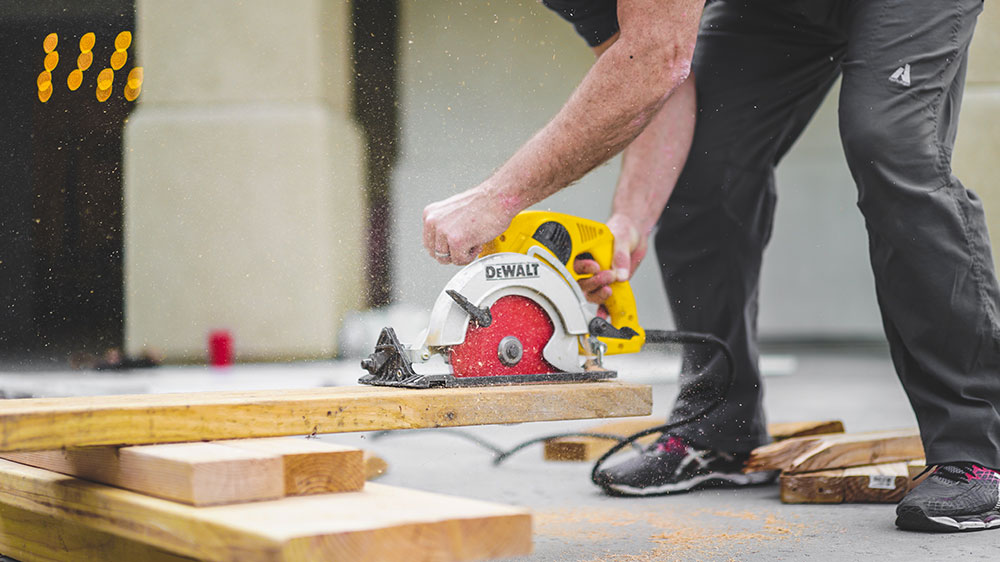Construction’s a dangerous space. With heavy, precarious scaffolding, heavy machinery and equipment, and working at heights, there are many elements of construction work that may leave an employee’s safety compromised. VR has entered the construction space, with opportunities to develop immersive virtual safety training opportunities. VR safety training has great benefits and the potential to deepen learning experiences, encourage better information retention, and lead to more favourable outcomes. We look at the advantages of VR and how it serves to improve safety training within the construction industry.
Virtual reality safety training can easily simulate real working environments with 3D property animations and can go beyond that to consider the emotions, distractions and sensations that might contribute to a workplace accident. In the past, companies carrying out safety training often needed to replicate buildings and environments in large, expensive exercises that could themselves lead to injury. Virtual reality training offers location or scenario-based training, but at no risk of injury to trainers or trainees. As users are separate from the real environments they’re accessing virtual, VR technology can take this training to the absolute limit. It can depict building structures in a 360-degree view, present distractions, add simulated loads, and allow for role-playing while also inserting realistic hazards and presenting their potential consequences.
Conducting safety training in the metaverse makes practice easier and allows for unlimited possibilities. Traditional safety training is limited in how much practice it offers, as each trainee needs to wait their turn and is usually guaranteed a certain number of trials according to cost. With VR, a trainee can simply put on the headset and practice until they feel confident enough to face the situation or environment in real life. Virtual reality’s also able to program random weather events or distractions and integrate them into training. It therefore goes beyond traditional training, which is once again limited by costs when it comes to incorporating variables and options.
VR safety training leaves construction workers more focused and confident on the job. As VR replicates a physical space, trainees need to maintain constant focus. Even if they’re not wearing a headset, they can watch the simulation on HD screens while their co-workers are undergoing training – a useful tool which ensures they continue learning even while they’re waiting for their own simulated exercise to begin. VR training also helps trainers effectively evaluate their students’ progress. As they’re able to view what trainees see as they go through the simulation, they observe the same scenarios, distractions or dangers from the same vantage point. This takes VR beyond traditional training yet again, as with typical safety training trainers observe students from a set point that’s often obscured. This software can also collect and evaluate data at the end of each training session, allowing trainers to provide accurate feedback that improves trainee confidence.
Virtual reality training also helps construction companies cut costs, stay relevant, and ensure their workers are well-informed. Programs can be customised to job sites or companies to showcase unique challenges that workers might face. Scenarios can be programmed into headsets, allowing workers to repeat their training at great economic savings to businesses. Workers are also encouraged to retain more information with the consistent, relevant instruction of VR. It’s therefore a great step for construction companies to integrate virtual reality within their safety training procedures.
Summary: How can VR be used in safety training in construction?
VR safety training enhances construction worker safety with immersive simulations.
It simulates real working environments and emotional factors, reducing injury risks.
VR training offers unlimited practice opportunities, improving trainee confidence.
Constant focus and realistic evaluations make VR training more effective.
Customisable programs save costs and keep workers well-informed in construction safety.
FAQs
Is VR training cost effective?
When it comes to training and education, virtual reality (VR) can be a cost-effective alternative to traditional classroom lectures. VR lets students experience a real-life scenario in a safe environment that’s not only more engaging but also more cost-efficient.
Is VR training good?
Virtual reality (VR) training is a great way to train employees. It can be used for training employees on how to use a specific piece of equipment or software, as well as teaching them how to perform their jobs in the real world. It’s also useful for educating employees on how to handle a new situation or scenario.
How virtual reality is used in training?
Virtual reality is used in training to simulate real-world situations. It can be used to train a variety of skills, from operating heavy machinery to flying an aeroplane. This is accomplished by using a headset that has built-in headphones, which allow the user to hear what’s going on around them. The headset also blocks out all other sounds.
How do you start virtual reality training?
The first step in virtual reality training is to decide what kind of experience you want to provide your employees with. Do you want them to have an immersive experience with 3D visuals? Do you want them to feel like they’re there? Or do you just want them to learn how different tools work?
What is virtual reality training?
Virtual reality (VR) training is a way to train employees using computer-generated environments that mimic real-world situations. These environments can be created with video game engines or 3D modelling software, and they can be used to simulate any number of scenarios.


